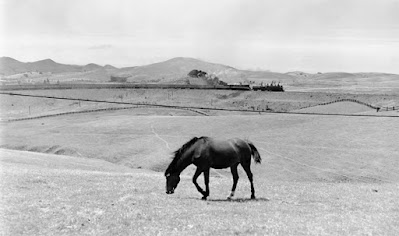A couple of months ago, I had a challenge suggested to me by email. The suggestion was that I go through the process I would use for a freight car kit, to make it more accurate, to improve details, or whatever might be needed to improve the kit. An interesting suggestion!
What I’ve chosen for this assignment is an InterMountain kit for a 12-panel, 40-foot box car. It represents a Texas & New Orleans box car of SP Class B-50-26.
What are these 12-panel cars? The 12-panel design was briefly a “fad” after World War II, as a way to save weight by using thinner steel for side sheets. But the thinner sheets were less stiff, so the compensation was an extra side post at the seam of that extra side sheet. Before long, it was decided that the weight saving wasn’t worth the changes. But for a couple of years, a number of railroads bought such box cars.
The Southern Pacific was one. During 1946 and 1947, they purchased 2600 12-panel box cars to the design of their Class B-50-25, followed by 3000 cars of Class B-50-26. Of the total of 5600 cars, 2350 were for T&NO, the rest for Pacific Lines. These were all of 10-foot inside height, which after World War II was an obsolescent dimension. A few other railroads also purchased 10-foot IH cars after the war, including Great Northern and Baltimore & Ohio.
So how would I go about deciding what aspects of the kit to replace or upgrade? Obviously the first step is prototype photos, which can readily show the prototype’s doors, ladders, sill steps, etc., but rarely show the roof and may not show trucks or car ends well. So second, a source of information on the things not shown in photos is essential.
We can readily determine that the InterMountain kit accurately represents the SP car body for Class B-50-26, with an “Improved Dreadnaught” end, 3 ribs over 4 ribs, abbreviated 3/4) in configuration, and a straight-panel roof. This basic body is shown below in an American Car & Foundry builder photo, with the 3/4 end configuration very clear. This is the end modeled by InterMountain.
The body of my kit is shown below, lettered for T&NO, and correctly including the “builder emblem”for AC&F. It’s numbered T&NO 56729. It would have been part of a 750-car group, T&NO 56450–57199.That this is a correct paint scheme can be seen in the builder photo below, although the car shown below is from the following class, B-50-27, with different ends and roof from the preceding Class B-50-26 cars. It’s a Pullman-Standard builder photo, just chosen to show the lettering.
The 5600 SP and T&NO 12-panel cars had a variety of specialties installed, and it’s necessary to consult historical sources to know which cars had which appliances. My book on SP box cars, Volume 4 in the series, Southern Pacific Freight Cars (Signature Press, revised edition 2014), is such a source. The first thing I did was consult the book’s Table 12-3, giving specialties by number group for Class B-50-26.
For the model’s car number, T&NO 56729, the Table shows that it should have Ajax handbrakes, a Morton steel running board, Camel-Youngstown 6-foot doors, and ASF A-3 trucks.
The two prototype photos above show the type of welded door needed: typed by the ribs in each of the three sections, it’s a 4/5/4 rib pattern, and has raised seams between sections. This is not what the kit’s door look like, as you can see below in a photo of the kit’s door sprue; they don’t have the raised section between panels, and are riveted.
I went to my stash of freight car parts to find the needed 4/5/4 welded doors with raised seams. I happen to have some cast resin copies of Branchline postwar doors, and these doors have the right configuration. They are from patterns made by John Spencer (with Branchline’s permission). However, they aren’t exactly right, because they are a little too tall for a 10-ft. IH car. That will be corrected in kit assembly. Here you see them with flash still present.
The kit also includes a running board apparently intended to resemble a U.S. Gypsum running board, though not terribly well done; I decided to use a Kadee Morton running board to match my prototype. The kit has an Ajax brake wheel, but I will use the better molding from Kadee. Finally, the kit’s sill steps are not the same shape as the SP prototype, and A-Line steps can be used as replacements.
With these major issues with specialties identified, I am turning to building the kit. I will return to that part of the story in a future post.
Tony Thompson




















































